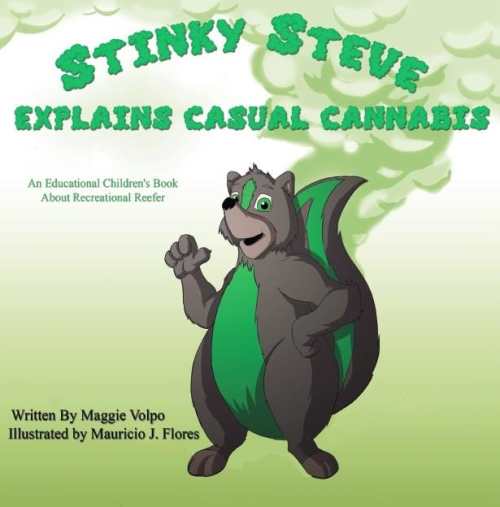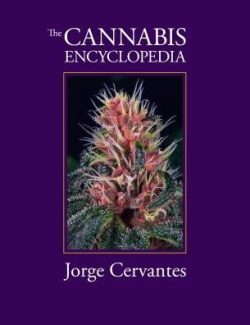Books and Cannabis: An Underground Love Affair

Independent publishers in the twentieth century took great risks in promoting the realities of cannabis. Connecting an underground readership in a peer-to-peer knowledge network, they often relied on free speech provisions and claims of “entertainment use only” to defend their ability to share experience and maintain a resistance culture.
Fast-forward to January 1, 2014: Colorado becomes the first American state to reopen doors on a legal recreational market for adult consumers of marijuana. The proliferation of retail outlets and medical marijuana dispensaries throughout the United States, and the persistent efforts of anti-prohibition activists to entrench safe access to the plant and products derived from it, has expanded the opportunities for creative individuals to share their experiences of growing, processing, and enjoying the benefits of cannabis without persecution.
A new audience for cannabis-related literature is emerging as all types of people encounter the plant in this shifting environment. No longer as widely stereotyped as part of a rebellious subculture adults with families and careers should avoid being associated with, intellectual debates about public policy, the economics of an open market for recreational marijuana in tandem with the medical sector, and the impact of wider access to the plant on community health are likely to stimulate a great deal of literary production. The collision between the mainstreaming of pot culture and new technologies that make it easier than ever to reach readers with online shopping, print-on-demand, and e-books, has swelled in a new wave of independent publishing on how to utilize the herb.
Won’t Somebody Think of the Children?

In a global, media-driven culture, “protecting” youth by way of keeping them ignorant of social realities has become a somewhat quaint, counterintuitive concept. Young people know about weed and are vulnerable to misinformation campaigns driven by old-guard, entrenched programs like DARE. Adults seeking to remedy this situation have historically had few tangible resources at their disposal: enter Stinky Steve—a friendly, rhyming, green-striped skunk who fights fear by promoting open, intergenerational conversations. Published by the Michigan Cannabis Business Association, Steve’s eponymous series busts numerous myths to which kids may be exposed at school or in the media. Launched in 2014, this project is slated for at least eight honest, vibrantly illustrated titles, each portraying families of various colors and creeds.
Now That I Can (Legally) Access It, How Do I Use It?

Popularly, marijuana has been depicted as green flowers, ground up like tobacco, and smoked in a hand-rolled joint. These days, highly concentrated extracts, the new century’s evolution of hashish, are a hot topic: easier to conceal and use discretely, their popularity is growing to match their potency. New cannabis users are unlikely to be familiar with such forms and their production. Ed Rosenthal’s latest tome, Beyond Buds: Marijuana Extracts—Hash, Vaping, Dabbing, Edibles, & Medicines, thoroughly explains the processes undertaken by those making the most of what’s left after the flowers have been harvested.
The Greenest of Thumbs

Whether growing your own, seeking work in the burgeoning cannabis agriculture sector, or setting out to be designated as a compassionate cultivator, it’s crucial to have a good gardening book (or several!) to reference. One of the best-known classic authors on the subject, Jorge Cervantes, is set to release a new Cannabis Encyclopedia early this year.
To anyone acquainted with the dangers of genetic modification and monoculture in food production, the possibility that these factors will enter the legal cannabis sector seems very real. For those concerned about the future of strain diversity when it comes to their medicine, Greg Green’s Cannabis Breeder’s Bible, now in its tenth year of print, is a must-read.
You Are What You Eat
The consumption of food and beverages infused with cannabis is part of a rich cross-cultural history. Gone are the days when Americans had only the occasional “special” brownie—the popularity of “medibles” has opened a world of choices; from juicing and raw recipes to multi-course menus, the sky’s the limit when it comes to getting pot in your pans. Although several good cannabis cookbooks are already available, keep an eye on 2015 for an explosion in this niche: particularly notable are those cross-specialty titles, like vegan chef Wheeler del Torro’s anticipated THC: The Healthy Cannabis Cookbook.
Show Me the Green
Given the massive sales figures of recreational cannabis in Colorado, it’s no surprise that “ganjapreneurs” are cropping up with all kinds of herb-related business concepts. So far, only a handful of small, digital-only guidebooks have emerged to support the wannabe dispensary or other “cannabusiness” owner. Due to the quickly-evolving nature of taxation regulations and quality control standards for marijuana derivatives, and the extreme state-by-state variation in the law, it may be some time before we see well-researched and comprehensive books on the subject.
The Future of Pot in Publishing
Once nation-wide prohibitions against cannabis are finally abolished, expect firsthand accounts of prohibition-era life to appear on the memoir/autobiography shelf, especially those detailing the anguish of being denied access to necessary medicine and wild tales of dodging prosecution. Until then, expect to find the most comprehensive and reliable information in books from authors who have courageously resisted the restrictions all along.
The freedom to decide what we put into our minds and bodies is one of life’s most fundamental liberties. As defenders of choice successfully turn back the clock on decades of harmful laws against the cultivation and use of one of humanity’s most helpful companions, it should come as no surprise that book lovers have always had a special relationship with the family of plants classified as cannabis sativa.
A mere century before the advent of digital books, practically everything printed in America appeared on hemp paper. Although factors contributing to cannabis prohibition were, and remain, complex, some historians have suggested that publishing industry heavyweights with substantial investment in tree pulp manufacturing had a hand in pulling this particular weed from the garden of social acceptability.
It’s through such channels that activists have been able to refine cultivation techniques, promote experience-based health information about the benefits of cannabis, and develop the rhetorical tactics needed to successfully combat the big-budget corporate and state campaigns aimed at keeping the plant illegal.
Known to many as an important therapeutic whole-plant medicine, in addition to being an exceptionally popular alternative to both tobacco and alcohol, the stigma entrenched through mid-century “Reefer Madness” and later “War on Drugs” campaigns appears, at long last, to be fading.
Patty Comeau is a freelancer based in the rural upper Appalachians and can be found on twitter @pattycomeau
Patty Comeau
